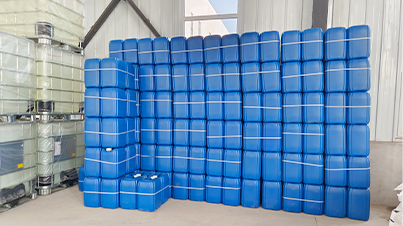poly aluminium
The Versatility and Applications of Poly Aluminium
Poly aluminium compounds, commonly referred to as poly aluminium chloride (PAC), are a class of coagulants widely used in various industries, particularly in water treatment processes. These compounds are renowned for their excellent coagulation and flocculation properties, alongside their ability to operate effectively in a diverse range of pH levels. This article explores the composition, properties, production methods, and applications of poly aluminium, shedding light on its significant impact on water purification and other industrial processes.
Composition and Properties
Poly aluminium is a type of inorganic polymer that consists of a series of aluminium ions and hydroxyl ions, linked to produce a composite with varying degrees of polymerization. The basic formula typically can be represented as [Aln(OH)mCl(3n-m)], where 'n' and 'm' can vary depending on the specific formulation. Because of this unique structure, PAC possesses several advantageous properties
1. High Charge Density The positive charge in poly aluminium helps bind negatively charged particles, making it a superior flocculant compared to traditional aluminum salts. 2. Wide pH Range Efficiency PAC can function effectively across a broad pH range (3-9), which allows for flexibility in its application in different water qualities.
3. Rapid Settling The flocs formed during the coagulation process with PAC settle quickly, resulting in clearer water and a reduction in the time and costs associated with water treatment.
4. Lower Dosage Requirement Compared to conventional coagulants, PAC requires a lower dosage to achieve the same level of purification, making it a cost-effective option.
Production Methods
The production of poly aluminium usually involves reacting high-purity aluminium hydroxide with hydrochloric acid and controlling the polymerization under specified conditions. This reaction can be tailored to yield different grades of PAC designed for specific applications. Several production methods exist, including
1. Batch Production Involves controlled addition of aluminium hydroxide and HCl in batches to create a homogeneous solution that can be subsequently polymerized.
2. Continuous Processing A more modern method where materials are fed continuously into a reactor, allowing for a steady production rate and consistent product quality.
These methods can be adjusted to change the molecular weight and charge density of the final product, thus customizing PAC for specific treatment needs.
poly aluminium

Applications
The versatility of poly aluminium makes it applicable in a variety of fields
1. Water Treatment This is the primary application of PAC. It is extensively used in municipal and industrial water treatment plants to remove suspended solids, organic matter, and pathogens, improving water quality for consumption and ecological standards.
2. Wastewater Treatment PAC is utilized in the treatment of industrial effluents, helping in the removal of heavy metals, dyes, and other toxic substances from wastewater before it is discharged or reused.
3. Paper Manufacturing In the paper industry, PAC serves as a retention aid, enhancing the effectiveness of fillers and improving overall paper quality while reducing raw material consumption.
4. Cosmetic Industry Due to its properties, PAC is also found in cosmetic formulations, where it acts as a clarifying agent and stabilizes emulsions.
5. Food Industry Some grades of poly aluminium are used for food processing applications, such as in the clarification of fruit juices and the purification of drinking water.
Environmental Considerations
As industries are increasingly focused on sustainability, poly aluminium is seen as a favorable option compared to traditional chemicals. Its lower dosage requirements not only reduce chemical use, but they also contribute to less sludge generation and lower environmental impact. Moreover, advancements in production techniques are making the synthesis of PAC more environmentally friendly.
Conclusion
Poly aluminium, primarily in the form of PAC, has established itself as an indispensable component in water treatment and various industrial processes. Its remarkable properties, coupled with its adaptability to different applications, make it a crucial element in addressing modern environmental challenges. As technology continues to advance and the need for clean water and efficient industrial processes grows, the role of poly aluminium compounds is likely to become even more significant in the years to come.
-
Water Treatment with Flocculant Water TreatmentNewsJun.12,2025
-
Polymaleic AnhydrideNewsJun.12,2025
-
Polyaspartic AcidNewsJun.12,2025
-
Enhance Industrial Processes with IsothiazolinonesNewsJun.12,2025
-
Enhance Industrial Processes with PBTCA SolutionsNewsJun.12,2025
-
Dodecyldimethylbenzylammonium Chloride SolutionsNewsJun.12,2025





